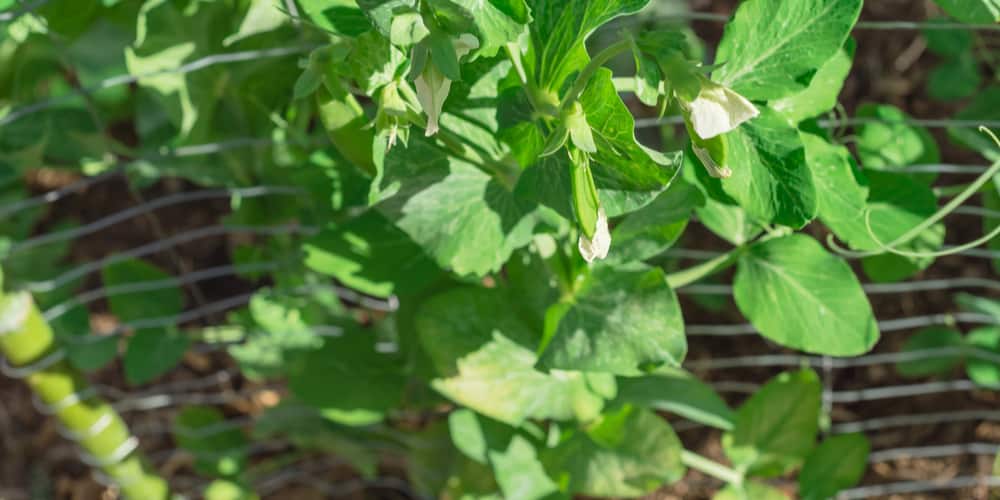Those who intend to grow sugar snap peas in their yard or garden may wonder, ‘do sugar snap peas need a trellis?’
There are two kinds of sugar snap peas- the bush and vining type. In bush form, sugar snap peas do not need support, while for the vining kind you’ll need to build a sturdy vertical structure, such as a trellis to get the pea tendrils to climb up.
In addition, you will want to meet its growing requirements, such as full sun and watering your plants on a regular basis.
Do I Need a Trellis for Snap Peas?
For the vining type of sugar snap peas, the answer is yes. The plant has a natural climbing habit and needs a support system to thrive in your vegetable garden.
The good news is that you can construct a trellis using several materials such as twine, wire mesh, or even rigid plastic nets in a pinch. You may need to introduce the tendrils to the trellis first as it grows, but once the ends of the sugar snap peas attach themselves to the support system then it will be easy going from there.
It’s recommended that you set up a trellis for your sugar snap peas as soon as you plant them on the ground. Don’t wait until they are too tall because you’ll have a harder time fixing them onto the vertical structure.
How Do You Trellis Sugar Snap Peas?
Vining species of sugar snap peas can grow up to eight feet (or 96 inches) in height, which means they will need a trellis as time goes on. Most pea tendrils will take to supports that are about a quarter of an inch in diameter, such as netting, small wire mesh, twine, and strings.
A trellis works wonders for restricted yard or garden spaces. A row of peas at the front and back of a trellis essentially doubles your count and makes for wonderful use of space. You can start by soaking the seeds for about 12 hours before you plant them to get a higher germination count.
Sugar snap peas can be sown in early spring or early fall in some regions. The cool season variety prefers full sun and partial shade in hotter areas. Once the plant begins to form tendrils you can extend the trellis’ reach by putting in some string twine at the bottom, then affixing the pea shoots to the twine using wire ties. Add some tension and repeat the process along the trellis every two or three inches.
Other than full or partial sunlight, you will need well-drained and organically rich soil for your sugar snap peas. Once this setup is complete you can just stand back and watch as the plant grows and produces vegetables. Water once weekly or more depending on the environment and how hot the day is, and keep an eye out for common pests such as cutworms, thrips, aphids, and spider mites.
Advantages of Using a Trellis for Sugar Snap Peas
Save Space
Those who have limited space in their yard will like the idea of having sugar snap peas on a trellis. You can grow the plant vertically and have the luxury of adding a companion plant or two at the bottom. Since sugar snap peas grow upwards via tendrils they can still be a viable choice for many.
You Can Plant More
Even if you have the space to grow sugar snap peas, you’ll want to put them on a trellis. You can effectively double the number of plants by sowing seeds at the front and back and enjoy more yields come harvest time. Installing a trellis may require a bit of work but it tends to bring more benefits than planting sugar snap peas without support.
Easier Harvest and Picking
You don’t have to wait a long time to harvest sugar snap peas- these plants begin producing pods after 6-8 weeks of sowing. During harvest, you’ll have an easier time inspecting and picking off the ones that are ready and leaving those that still need more time on the vine. The peas will likely be arranged in a way that you can pick them off quickly and efficiently.

